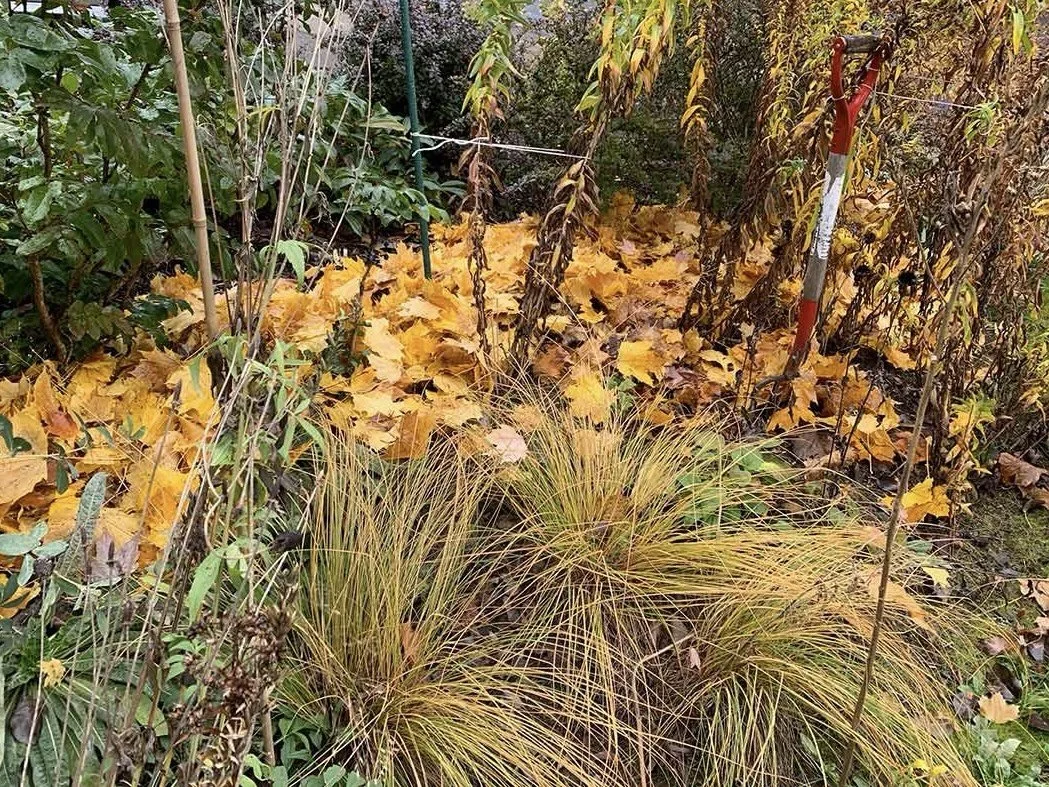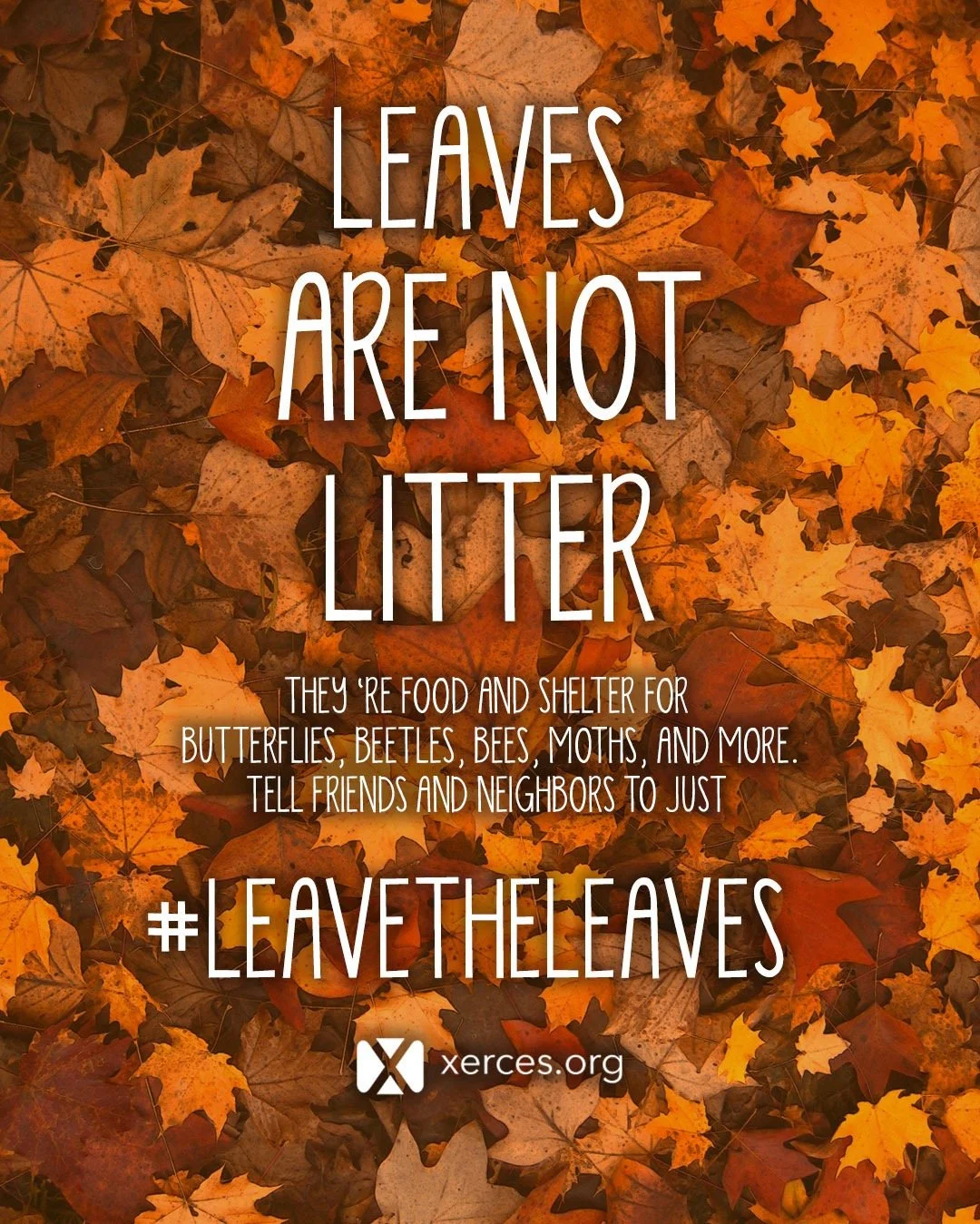Leaves the Leaves: Winter Habitat Protection
You may have seen the yard signs “Leave the Leaves.” Organizations like the National Wildlife Federation, USDA and Xerces Society encourage people to rethink the rake, mow and blow routine. Read a brief piece from the Xerces Society
Leaves are habitat, not trash
One of the most valuable things you can do to support pollinators and other invertebrates is to provide them with the shelter they need to survive the winter. Thankfully, that’s pretty easy; all you need to do is do less yard work.
Leaves, brush piles, fallen logs, plant stems, and flower heads might not be growing anymore, but they aren’t trash — they are natural homes for wildlife! A layer of leaves is vital insulation from the cold for the many animals that hide within (or in the soil beneath), like quite a few butterflies. Others, like many native bees, nest within stems, flower heads, or pieces of wood. Throwing out all of your leaves and other plant material isn’t just taking away options for shelter; there’s a good chance you’re tossing out many animals that have already settled in!
That’s why this year and every year, we are making the case for leaving the leaves. That’s not to say you can’t do any tidying up. We have tips for thoughtful autumn cleanup that still leaves space for nature. You’ll also meet just a few of the many animals you’ll be saving. Read on!
Photo credit: Xerces Society
Fall Cleanup in Moderation
Leaving the leaves and other plant debris doesn’t have to mean sacrificing your yard to the wilderness. The leaves don’t need to be left exactly where they fall. You can rake them into garden beds, around tree bases, or into other designated areas. Too many leaves can kill grass, but in soil they can suppress weeds, retain moisture, and boost nutrition. (Xerces Society)







